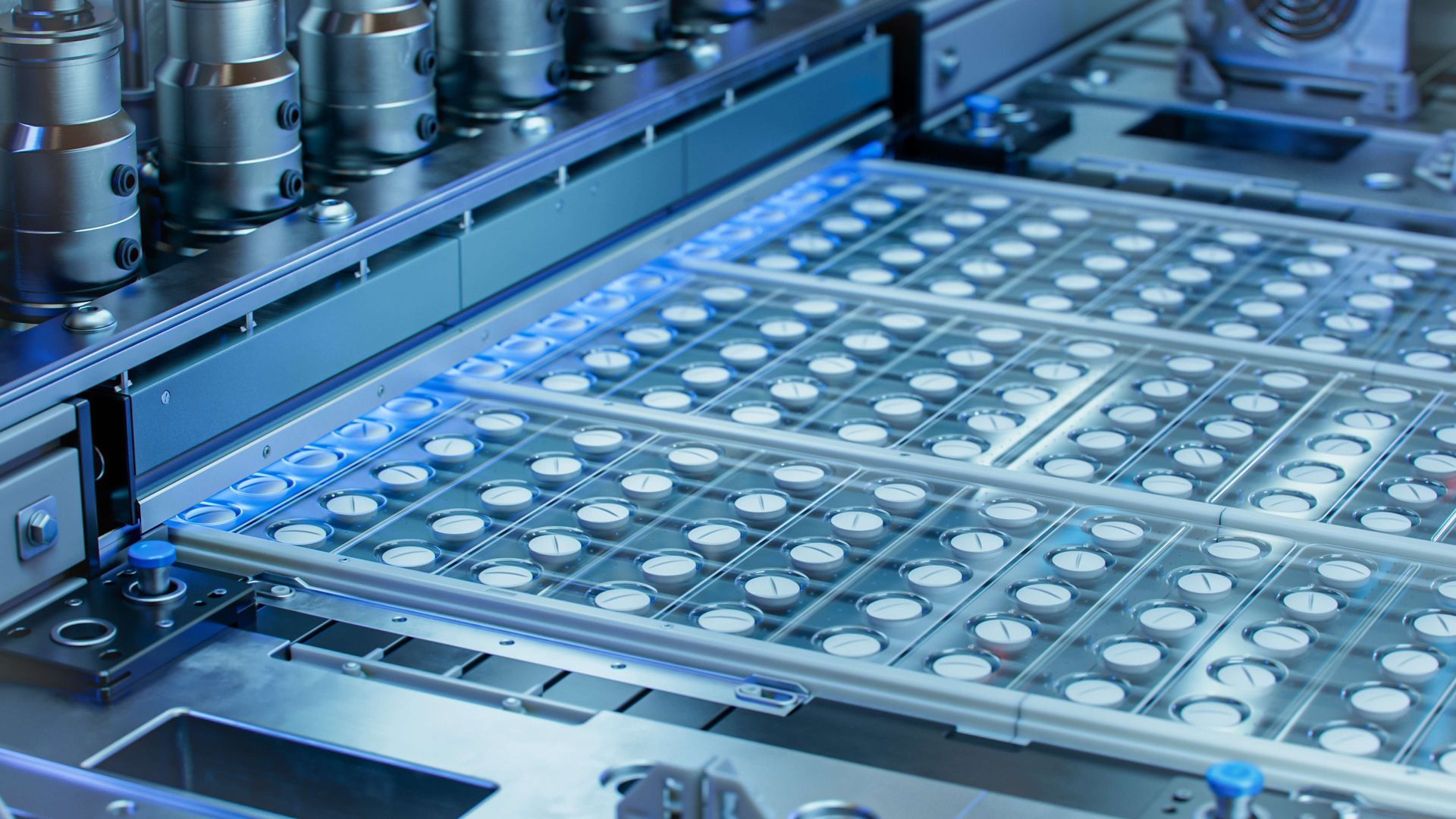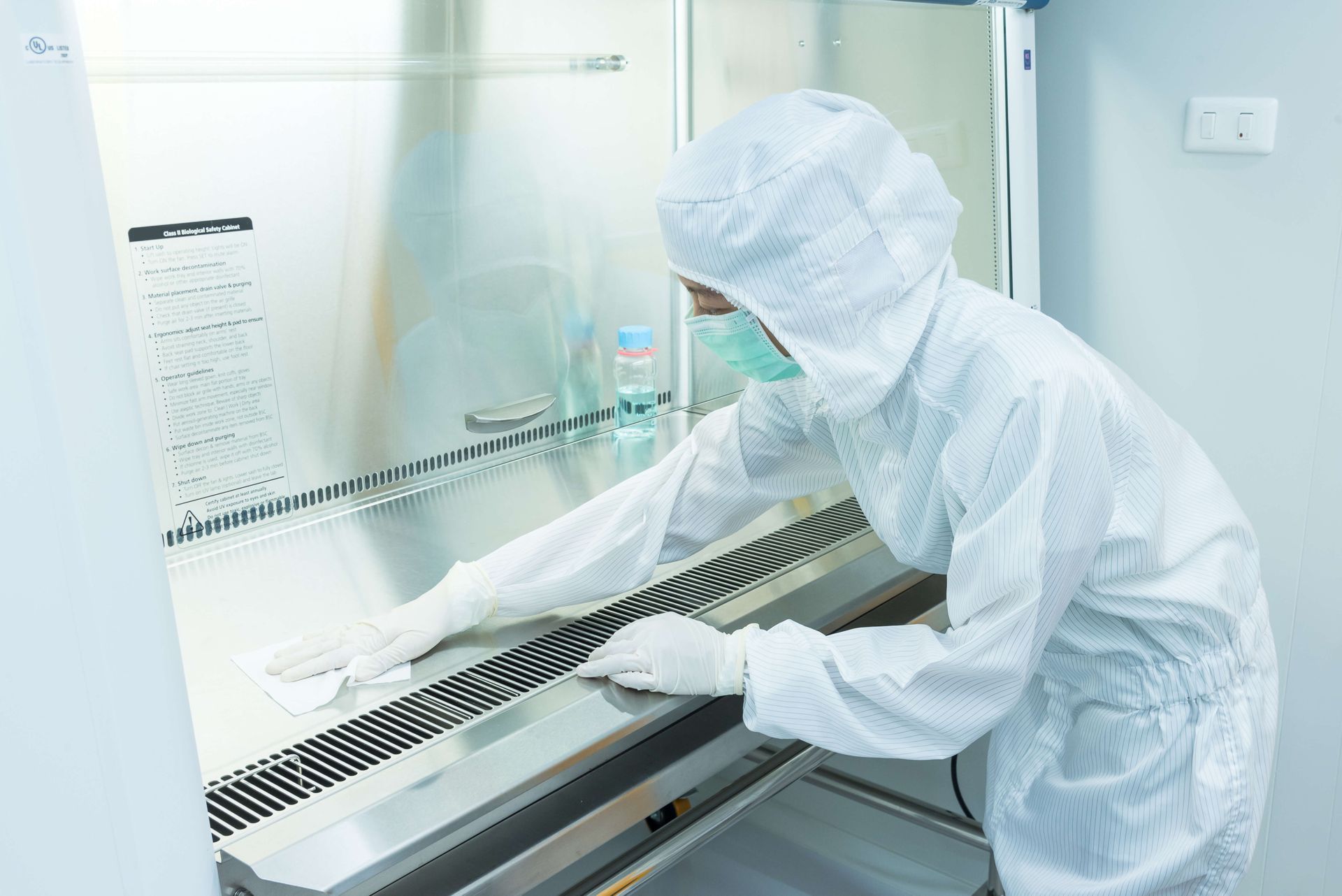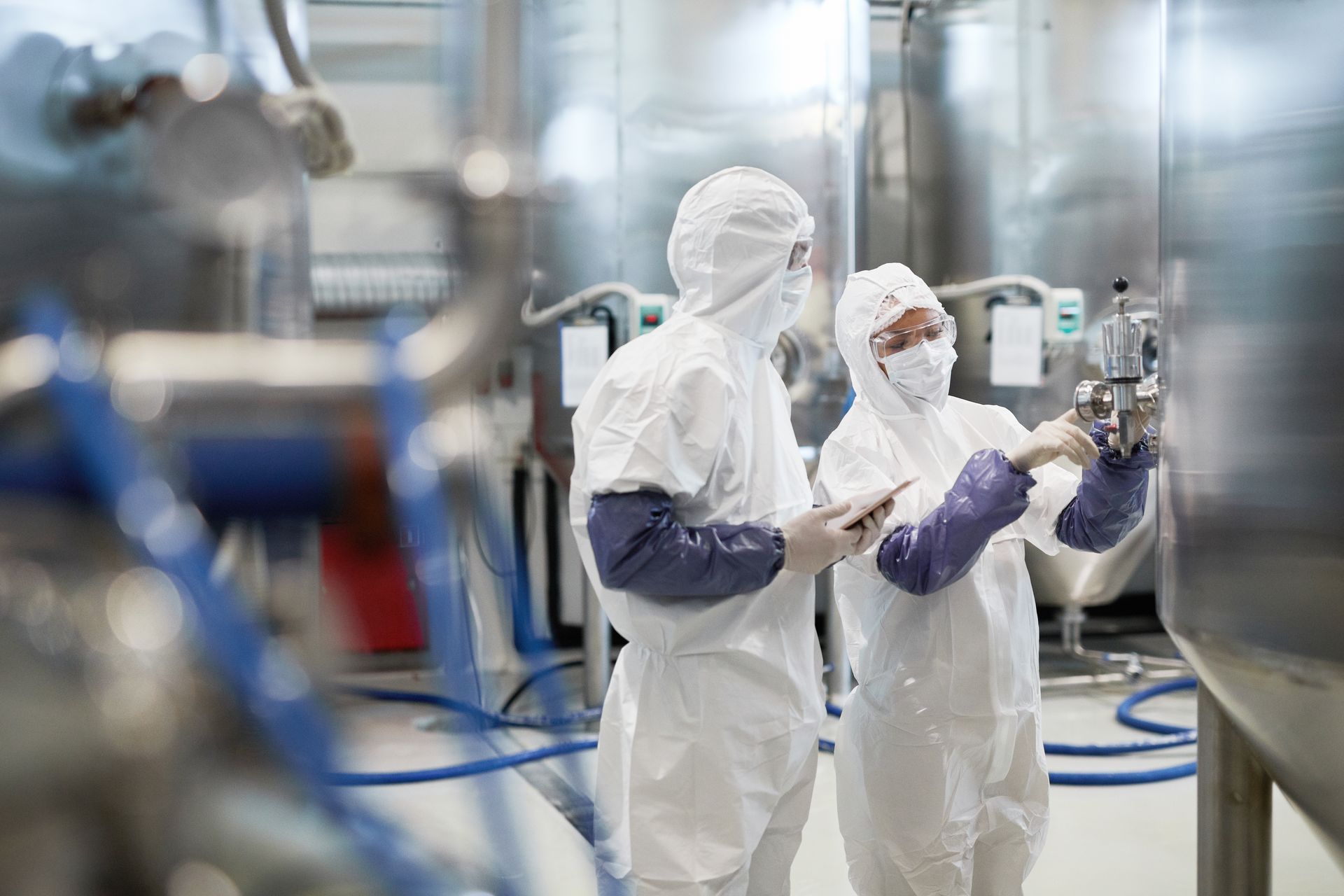Cleanroom Packaging Requirements and Solutions

Introduction
Cleanrooms are controlled environments essential for the production and processing of products where contamination could significantly impact the quality, safety, and performance of the final product. Industries such as pharmaceuticals, biotechnology, semiconductor manufacturing, aerospace, and medical device production rely heavily on cleanrooms to ensure that their products meet the highest standards of cleanliness and quality. An often overlooked but crucial aspect of cleanroom operations is the packaging process, which is necessary to maintain the integrity of products during storage, handling, and transportation.
Cleanroom packaging is designed to prevent contamination from external sources and to maintain the desired quality of the product from production to end-use. The selection of appropriate packaging materials, methods, and handling techniques is vital to minimize contamination risks and meet regulatory standards. This article explores the packaging requirements for cleanroom environments, the role of packaging solutions in contamination control, and the challenges associated with cleanroom packaging.
Cleanroom Packaging Requirements
Packaging in cleanroom environments serves several key functions: preventing contamination, preserving product integrity, ensuring compliance with regulatory standards, and maintaining product sterility. The following are the primary packaging requirements in cleanroom environments:
1. Minimizing Contamination Risks
The primary goal of cleanroom packaging is to prevent contamination of products from external sources such as dust, particles, microbes, and chemicals. Contamination risks arise from multiple factors during the production, handling, and storage of cleanroom products. Packaging materials must be carefully selected to minimize these risks by ensuring that the packaging remains sterile, airtight, and impermeable to particles and microbes.
- Particle-Free Packaging: Packaging materials must be non-shedding and must not introduce additional particles into the cleanroom environment. This is especially crucial in industries like semiconductor manufacturing, where even microscopic particles can damage the sensitive components.
- Sterility Maintenance: Many cleanroom products, especially pharmaceuticals and medical devices, require sterile packaging to maintain product safety. The packaging materials must support the sterilization processes (e.g., gamma irradiation, ethylene oxide, or steam sterilization) and ensure that products remain sterile until they reach the end-user.
2. Meeting Regulatory Standards
Cleanroom packaging must comply with stringent regulatory standards, which vary across industries. For example:
- FDA Regulations for Pharmaceuticals: In the pharmaceutical industry, packaging materials and methods must adhere to the U.S. Food and Drug Administration (FDA) requirements for packaging and labeling. This includes compliance with the Good Manufacturing Practices (GMP), which stipulate that packaging systems should protect products from contamination and maintain their integrity throughout the manufacturing process.
- ISO 14644 Standards: Packaging materials and methods must meet the ISO 14644 standards for cleanroom environments. These standards specify acceptable levels of particulate contamination and set guidelines for the design, construction, and operation of cleanrooms.
- European Union Regulations for Medical Devices: Similarly, medical device manufacturers must comply with the European Union’s Medical Device Regulations (MDR), which require packaging to preserve the sterility and safety of devices while preventing contamination.
3. Compatibility with Cleanroom Operations
Packaging systems must be compatible with the specific conditions of the cleanroom environment. Packaging materials and packaging operations should not interfere with cleanroom airflow, cause contamination, or disrupt the cleanroom’s operation. Some packaging solutions may require additional processes such as cleaning, sterilization, or decontamination before use in cleanrooms, which can be time-consuming and resource-intensive. Cleanroom operators must ensure that these packaging systems integrate seamlessly into the cleanroom workflow.
4. Protection During Storage and Transportation
Cleanroom packaging must also provide adequate protection during the storage and transportation of products. The packaging should shield the product from physical damage (e.g., crushing or abrasion), environmental factors (e.g., temperature fluctuations or humidity), and contamination risks that may occur outside the cleanroom. Packaging solutions should be durable and robust enough to withstand handling during shipping and storage without compromising the quality of the product.
Packaging Materials in Cleanrooms
The choice of packaging materials in cleanrooms is guided by the requirements for contamination control, sterility, durability, and compatibility with the manufacturing processes. The following are common packaging materials used in cleanroom environments:
1. Polyethylene (PE) and Polypropylene (PP) Films
Polyethylene and polypropylene are popular plastic materials used for cleanroom packaging due to their low particle shedding properties and chemical resistance. They are commonly used for creating bags, pouches, and film wraps. These materials can be heat-sealed to create airtight packaging that helps maintain sterility and protect products from contamination.
- Advantages: Lightweight, low cost, flexible, and customizable.
- Applications: Used in packaging components, medical devices, and pharmaceuticals.
2. Tyvek®
Tyvek® is a brand of flash-spun high-density polyethylene (HDPE) used in the production of sterile packaging. It is breathable, resistant to tears and punctures, and impervious to contaminants. Tyvek® is commonly used for medical device packaging, as it is both durable and allows for sterilization without compromising the integrity of the package.
- Advantages: Durable, resistant to punctures, and allows for sterilization.
- Applications: Often used for sterile packaging in the medical device and pharmaceutical industries.
3. Polyvinyl Chloride (PVC)
Polyvinyl chloride (PVC) is a versatile material used in cleanroom packaging, especially in applications where flexibility and durability are important. PVC films are often used to package sensitive electronic components, pharmaceuticals, and laboratory products.
- Advantages: Strong, durable, and cost-effective.
- Applications: Used for packaging small components, medical supplies, and laboratory instruments.
4. Aluminum Foil
Aluminum foil is often used in cleanroom packaging for products that require shielding from moisture, light, and oxygen. Aluminum foil provides excellent protection against environmental contaminants and is often used for packaging medical supplies, pharmaceuticals, and food products in cleanroom environments.
- Advantages: Excellent barrier properties, durable, and moisture-resistant.
- Applications: Used in packaging of sterile medical devices, pharmaceuticals, and sensitive chemicals.
5. Vacuum Sealing
Vacuum sealing is a method of packaging in which the air is removed from the package, and the contents are sealed in an airtight environment. Vacuum-sealed packaging helps protect the contents from contamination, moisture, and oxidation. This method is commonly used for pharmaceutical and medical device packaging, as well as in the electronics industry for sensitive components.
- Advantages: Extends shelf life, prevents contamination, and maintains product integrity.
- Applications: Used for medical devices, sterile components, and pharmaceuticals.
Cleanroom Packaging Solutions
The packaging process in cleanrooms is critical to maintaining product integrity and preventing contamination during production, storage, and transportation. The following are some packaging solutions designed to meet cleanroom requirements:
1. Sterile Packaging Systems
Sterile packaging solutions are designed to maintain sterility throughout the lifecycle of the product. These packaging systems use materials such as Tyvek® or medical-grade polyethylene, which are compatible with various sterilization methods (e.g., gamma radiation, ethylene oxide, or steam sterilization). The packaging system must also ensure that the sterilization process does not compromise the quality or integrity of the product.
- Challenges: Sterile packaging solutions must ensure that there are no gaps or breaches that could lead to contamination. Packaging must be able to withstand the sterilization process without breaking down.
2. Cleanroom-Compatible Packaging Equipment
The machinery and tools used to handle and package products within the cleanroom must be designed to prevent contamination. Cleanroom-compatible packaging equipment includes automated sealing machines, labeling machines, and robotic arms that can handle sensitive products without contaminating them. These machines are designed with materials that do not shed particles and are easy to clean and maintain.
- Challenges: Ensuring that packaging equipment is free from contamination and can operate within the controlled conditions of the cleanroom. Equipment should also allow for efficient, high-throughput packaging without introducing risks of contamination.
3. Barrier and Shielding Packaging
Packaging materials that provide a protective barrier against external contaminants, such as dust, moisture, and air, are essential for cleanroom environments. Barrier films and shielding packaging prevent contamination during storage and transportation. For instance, aluminum foil or multilayered films can be used to shield products from light, moisture, and oxygen while maintaining cleanliness.
- Challenges: Packaging materials need to provide effective barriers while still being flexible and lightweight. Additionally, manufacturers must ensure that the barrier properties are consistent throughout the product’s shelf life.
4. Anti-Static Packaging
In industries like semiconductor manufacturing, electronic components and devices are highly sensitive to electrostatic discharge (ESD). Anti-static packaging solutions are essential to protect these products from electrostatic damage during transportation, handling, and storage. Packaging materials such as ESD-safe bags and trays help mitigate the risk of electrostatic discharge by neutralizing the charge and protecting sensitive components.
- Challenges: Ensuring that packaging maintains its anti-static properties throughout the storage and handling process. Materials must also be compatible with cleanroom environments and not introduce additional contaminants.
Challenges in Cleanroom Packaging
While cleanroom packaging plays a critical role in ensuring product safety and quality, there are several challenges to be addressed:
- Material Compatibility: The packaging material must be compatible with the specific cleanroom processes, including sterilization, environmental control, and handling procedures. Packaging must also meet industry standards for contamination control without interfering with the cleanroom's airflow and operation.
- Regulatory Compliance: Cleanroom packaging must comply with various regulatory standards, including FDA guidelines, ISO 14644, and GMP requirements. Compliance with these regulations is necessary to ensure product safety and avoid costly recalls or fines.
- Cost Efficiency: Cleanroom packaging can be costly due to the stringent material and quality standards required. Manufacturers must balance the need for high-quality packaging with cost constraints while ensuring that packaging is effective in maintaining product integrity.
Conclusion
Cleanroom packaging is an integral aspect of maintaining the highest standards of product quality, sterility, and contamination control in various industries. By utilizing specialized materials and techniques, manufacturers can safeguard products from contamination during production, handling, storage, and transportation. While challenges such as material compatibility, regulatory compliance, and cost efficiency exist, innovative cleanroom packaging solutions help mitigate these risks and contribute to the overall success of cleanroom operations. As industries continue to demand higher performance, cleaner environments, and stricter regulatory compliance, the role of cleanroom packaging will remain critical in ensuring product integrity, safety, and quality.
Read more: All About Cleanrooms - The ultimate Guide






